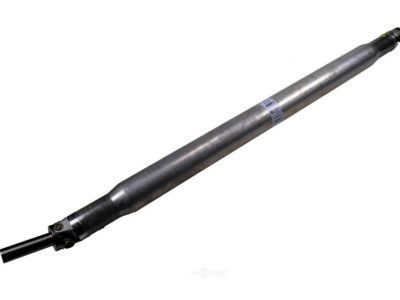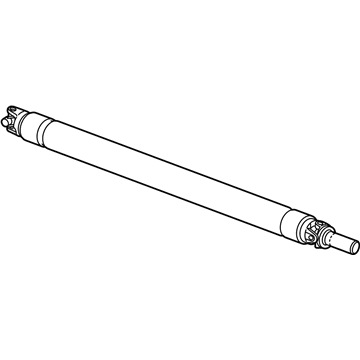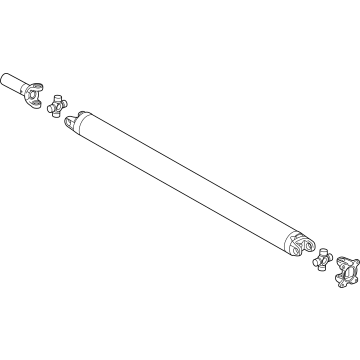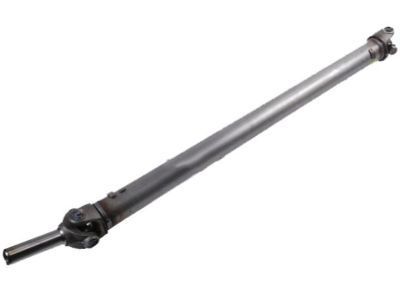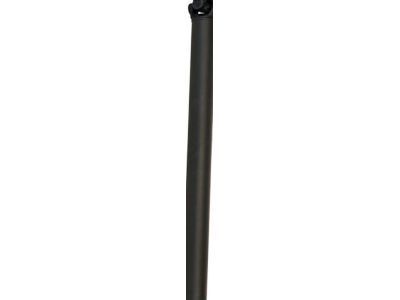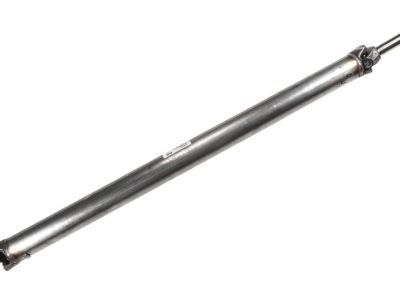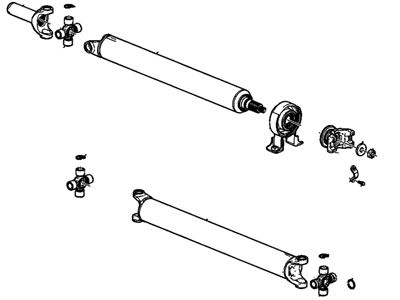My Garage
My Account
Cart
Genuine GMC Canyon Drive Shaft
Axle Shaft- Select Vehicle by Model
- Select Vehicle by VIN
Select Vehicle by Model
orMake
Model
Year
Select Vehicle by VIN
For the most accurate results, select vehicle by your VIN (Vehicle Identification Number).
25 Drive Shafts found
GMC Canyon Front Axle Propeller Shaft Assembly
Part Number: 25843685$593.10 MSRP: $945.95You Save: $352.85 (38%)Ships in 1-3 Business DaysGMC Canyon SHAFT ASM-F/AXL PROP
Part Number: 84940461$268.28 MSRP: $423.92You Save: $155.64 (37%)Ships in 1-3 Business DaysGMC Canyon Propeller Shaft Assembly
Part Number: 94769075$338.53 MSRP: $535.07You Save: $196.54 (37%)Ships in 1-3 Business DaysGMC Canyon Shaft Assembly, Prop
Part Number: 84369124$398.15 MSRP: $629.28You Save: $231.13 (37%)Ships in 1-3 Business DaysGMC Canyon SHAFT ASM-PROP
Part Number: 85518585$440.70 MSRP: $696.55You Save: $255.85 (37%)Ships in 1-2 Business DaysGMC Canyon SHAFT ASM-PROP
Part Number: 84521705$352.20 MSRP: $556.67You Save: $204.47 (37%)Ships in 1-2 Business DaysGMC Canyon SHAFT ASM-PROP
Part Number: 84369122$538.53 MSRP: $855.03You Save: $316.50 (38%)Ships in 1-2 Business DaysGMC Canyon SHAFT ASM-F/AXL PROP
Part Number: 84521716$250.46 MSRP: $395.77You Save: $145.31 (37%)Ships in 1-2 Business DaysGMC Canyon SHAFT ASM-PROP
Part Number: 85109716$315.73 MSRP: $499.02You Save: $183.29 (37%)Ships in 1-2 Business DaysGMC Canyon SHAFT ASM-PROP
Part Number: 84521712$378.03 MSRP: $597.49You Save: $219.46 (37%)Ships in 1-2 Business DaysGMC Canyon Front Axle Propeller Shaft Assembly
Part Number: 84076334$264.59 MSRP: $418.19You Save: $153.60 (37%)
| Page 1 of 2 |Next >
1-20 of 25 Results
GMC Canyon Drive Shaft
The Drive Shaft in GMC Canyon vehicles plays the useful role of transmitting mechanical power as well as torque from the engine or the transmission to the drive wheels to facilitate the proper working of the vehicle. This is the component that is supposed to withstand torsion as well as sheer stress while at the same time being very light in order to minimise inertia. Various types of Drive Shafts may be adopted in GMC Canyon models such as one piece, two piece and slip in tube type in which the crash safety feature is emphasize. In some layouts like front-engine, rear-wheel, the driveshaft transfers the power of the engine to the rear axle where as four-wheel and all-wheel drive layouts may use more than one driveshaft to split the power between front and rear axle. Flexible couplings such as the universal joint, the jaw coupling or the splined joint enable variation of alignment as well as distance in order to function well irrespective of the driving condition.
Each OEM GMC Canyon Drive Shaft we offer is competitively priced and comes with the assurance of the manufacturer's warranty for the part. Furthermore, we guarantee the speedy delivery of your orders right to your doorstep. Our hassle-free return policy is also in place for your peace of mind.
GMC Canyon Drive Shaft Parts Questions & Experts Answers
- Q: How do you remove the rear driveshaft on GMC Canyon?A: The first step to removing the rear driveshaft is to raise the vehicle and firmly support it on jackstands. The transmission should be placed in Neutral with the parking brake off and the front wheels blocked. Mark reference points on the driveshaft so that they align with those on the pinion flange. Use a screwdriver or prybar to undo the bolts and straps of the rear universal joint, thereby preventing it from turning. Since there may be splines inside the spider, tape its bearing caps down. Similarly, if applicable remove support bearing mounting bolts. Slide it out of the transmission or transfer case while lowering the back end of the drive shaft. Put a plastic bag over housing to prevent fluid loss/contamination. Remove this plastic bag upon installation and wipe clean. Insert front part of driveshaft into transmission or transfer case, while raising rear one ensuring marks are aligned. Remove tape securing bearing caps and install straps and bolts tightening them to specified torque values. For 4WD models' front driveshaft; raise vehicle's front part & take off skid plate where present; mark relationship between driveshaft & companion flange at forward differential & transfer case flange; remove strap & bolt from differential flange as well as those fastening driveshaft to transfer case flange; push rearwards drive shaft from differential flange then lower & pull out from transfer case; after installing ensure rear is properly aligned with marks made on companion flange at front differential as well as transfer case flange at back; tighten all couplings using defined levels of torque; and finally install skid plate if available.
- Q: How to remove and install the Drive Shaft in a 4WD GMC Canyon?A: Loosen the left front wheel lug nuts, raise the vehicle, place it securely on jackstands and remove the left front wheel. Remove the splash shield. Remove the left driveaxle and intermediate shaft bearing housing. Thread a slide hammer adapter into the hole in the end of the intermediate shaft. Attach a slide hammer to the adapter. Pull the intermediate shaft out of the Differential, taking care not to damage the seal on the opposite side of the oil pan. Make sure the retaining ring is in position on the end of the intermediate shaft. Insert the intermediate shaft through the oil pan passage and into the differential, taking care not to damage the oil seal. Rotate the shaft as necessary to align its splines with the differential. Install the slide hammer on the shaft, then use the slide hammer to drive the shaft In until its retaining ring locks into place in the differential. The remainder of installation is the reverse of the removal steps.
- Q: What is the purpose and maintenance requirements of a driveshaft and Universal Joint on GMC Canyon?A: A drive shaft is a tube that carries power between the transmission or transfer case and the differential. There are universal joints on either end of the rear drive shaft and on the front end of the front drive shaft. The front of the rear drive shaft has a splined yoke that slides into the extension housing of the transmission or transfer case, permitting it to be moved back and forth during vehicle operation. An oil seal prevents this leakage. Very little maintenance is required for the drive shaft assembly, but it may become necessary to replace universal joints if they develop problems. Drive shafts should be kept clean and checked for damage. Driving noise or vibration usually reveals issues with this part. When inspecting, look at its surface for dents or cracks, as well as for oil leakage from both ends. The U-joints should have free play without binding, rattling or rocking in them. Make sure you also tighten up all bolts securing the driveshaft in place. On 4WD models, check out the front driveshaft too including any seepage around its sleeve yoke. Looseness in the jointity of front driveaxles can be determined by checking; also look for grease or oil leaks emanating from rubber boots as well as axle flanges.
Related GMC Canyon Parts
Browse by Year
2024 Drive Shaft 2023 Drive Shaft 2022 Drive Shaft 2021 Drive Shaft 2020 Drive Shaft 2019 Drive Shaft 2018 Drive Shaft 2017 Drive Shaft 2016 Drive Shaft 2015 Drive Shaft 2012 Drive Shaft 2011 Drive Shaft 2010 Drive Shaft 2009 Drive Shaft 2008 Drive Shaft 2007 Drive Shaft 2006 Drive Shaft 2005 Drive Shaft 2004 Drive Shaft


